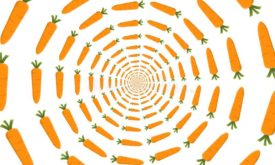I can’t remember when I heard about the Campaign for a Commercial-Free Childhood. I’ve been on their mailing list for a number of years, and they are consistently measured and serious in their dedication to pointing out how our children’s lives have been commercialized. As far as I’ve noticed, they don’t make up overblown campaigns about nothing the way that some organizations do. I think that they’ve got enough really shocking stuff to go after…they don’t have any dead air to fill!
They have just announced their first “TOADY” awards — I highly recommend you go to their site to check out their nominations for the worst toys of the year. And you can vote on your “favorite” as well.
CCFC has its work cut out for them: Their main mission is to point out how much junk is sold directly to kids, often with parents’ permission and encouragement. From them I learned that if a packaged food at the supermarket has a commercial character on it, that food is likely to have more fat, salt, and sugar than comparable foods without commercial characters. They have documented that watching TV programs with commercial characters, which then appear as toys, food containers, food, toothpaste, diapers, clothing, shoes, and more, actually dulls children’s natural imaginations. Kids get hooked into corporate consumer culture early, and then the corporations get them for life.
I think I’ve mentioned in my blog before that different preschool teachers, with no word from me on the subject, figured out that our kids didn’t watch TV. How did they know? Kids who are saturated with commercial characters start to learn early the standard storylines and characters. When they do “imaginative” play, they reenact rather than make up their own stories. Preschoolers learn social behavior by mimicking what’s around them. Shows marketed to kids teach them behaviors that teachers start to recognize. One teacher told me that she knew every kid in the class who watched Power Rangers.
The further issues that CCFC confront concern the content of kids’ shows. Violence, of course, has been a standard for years. Cartoon characters model problem-solving for kids: don’t like what your friend did? Hit him! Blow him up!
Another issue that they publicize is one that is terribly important for all parents of girls to consider: the role of girls in kids’ shows is often diminished and sexualized. Where boys are the ones who go out and do things, girls are the ones who, at best, help, or, at worst, are the victim. Girls are taught that how they look is more important than who they are or what they can do. Of course, girls can never measure up to Barbie or the Bratz, and they will always look in the mirror and see something lacking. It breaks my heart to hear a little girl say negative things about her looks when she should be happy in her body and developing her mind and her friendships.
Another issue that they bring up is how hooking kids into television is taking away from the role of family and parents in their lives. One of the toys they nominate is a stationary exercise trike that is hooked into the TV. Instead of having to go out and play with your kid, both of you can hook into your stationary exercise machines and ignore each other! Children need to know that their parents are there to guide them, and that they are more interesting to their parents than anything else that might take up their time.
Children’s health and intellectual growth is another important issue they tackle. The toys that they criticize often encourage a sedentary, unimaginative lifestyle. More kids than ever are suffering from obesity, diabetes, and attention problems. Those kids need to turn off the TV and get out and live a bit more. Unfortunately, just the propensity toward diabetes is now making many children in this country have a lower life expectancy than their parents — for the first time in our country’s history.
CCFC has great tips for parents to help them choose toys that will truly be fun AND educational for their kids. But the first step will be turning off the TV so that the kids start to notice the real world around them again.



